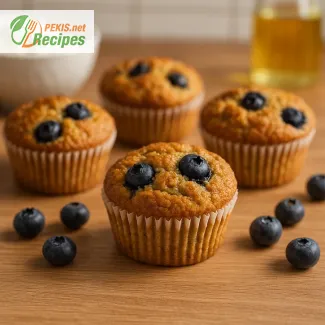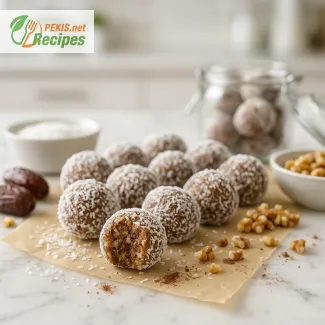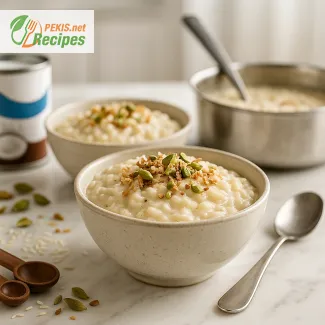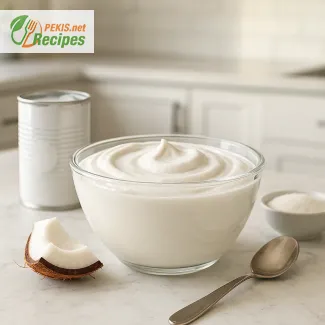
Smart-baked diabetic muffins reinvented with skyr, blueberries and stevia
A low-carb, protein-rich treat made with intelligent baking and thoughtful ingredients
In the evolving world of health-conscious baking, one particular creation is winning the attention of wellness-minded home bakers: skyr-style cottage-cheese blueberry muffins with stevia, a diabetic-friendly dessert crafted for precision in a smart oven. This unique fusion of Nordic-inspired ingredients and modern kitchen technology brings together taste, texture and nutritional balance, all while supporting blood sugar control.
These muffins aren’t just a variation of a familiar favorite – they are a complete rethinking of what a muffin can be. Instead of relying on refined sugars and white flour, this recipe incorporates stevia, a natural zero-calorie sweetener, alongside low-fat cottage cheese or skyr, a traditional Icelandic dairy product known for its high protein content and creamy texture. The result is a muffin that satisfies the craving for something sweet while fitting effortlessly into low-glycemic diets.
Why cottage cheese and skyr are game changers in baking
Cottage cheese and its cousin skyr have become staples in health-forward kitchens, not only for their protein-rich profiles but also for their impact on texture and moisture in baked goods. When used in muffin batters, these ingredients add a subtle tang, tender crumb, and rich body—without the need for added fats like butter or oil. This makes them especially suitable for those managing type 2 diabetes or looking to reduce saturated fat intake without compromising on satisfaction.
Skyr, in particular, offers a creamy consistency that mimics Greek yogurt but with a denser protein concentration and less tartness. Paired with fresh or frozen blueberries, which are naturally low on the glycemic index and packed with antioxidants, this combination delivers flavor and function in equal measure.
Baking for diabetics: a thoughtful approach
Crafting desserts for diabetics isn’t simply about replacing sugar—it’s about understanding how every ingredient impacts the glycemic response. By using stevia instead of traditional sweeteners, we eliminate glucose spikes without losing the indulgent essence of a muffin. Unlike artificial sweeteners, stevia is plant-derived and stable at high baking temperatures, making it ideal for oven-based recipes.
Furthermore, the inclusion of wholegrain flour, oat flour, or almond flour adds fiber and healthy fats while lowering the overall carbohydrate content. This makes each bite more filling and helps slow the release of glucose into the bloodstream.
The role of smart ovens in consistent, healthier baking
Smart ovens represent a quiet revolution in modern kitchens, providing precision heat control, automated baking programs, and real-time monitoring. This technology ensures even baking results, reducing the risk of underbaking (which can affect texture) or overbaking (which dries out low-fat batters quickly).
For diabetic-friendly recipes, this precision is especially valuable. Since many alternative flours and sugar substitutes behave differently than traditional ingredients, consistent heat and timing are crucial to achieving perfect muffins every time. Smart ovens can often detect humidity and internal temperatures, adjusting the baking process accordingly—a feature that’s particularly beneficial for low-sugar, protein-heavy batters.
A versatile muffin with wide appeal
While specifically designed as a dessert for diabetics, these muffins are far from limited in appeal. They fit effortlessly into a wide range of dietary lifestyles: low-carb, gluten-free (with flour substitutions), high-protein, and even post-workout snack routines. Their naturally low sugar content and balanced macro profile make them an ideal option for parents seeking healthier treats for kids, professionals needing a clean energy boost, or anyone craving a guilt-free bite during the day.
You can serve them as part of a weekend brunch, pack them into a school lunchbox, or enjoy them fresh out of the oven with a dollop of Greek yogurt or a touch of almond butter. The soft interior, subtle sweetness, and bursts of blueberry ensure that no one will miss the sugar.
Customization and seasonal twists
Another standout benefit of this recipe is its adaptability. While blueberries offer a classic pairing, you can easily swap them for raspberries, blackberries, or even thinly sliced apples with cinnamon for a warming variation. For added texture, a sprinkle of crushed walnuts or pumpkin seeds on top provides crunch and an extra dose of heart-healthy nutrients.
If you're baking for a mixed audience, you can even prepare half the batch with dark chocolate chips and the other half with extra berries, creating variety without doubling your effort. And because these muffins are free from added sugars, they're also well-suited for anyone reducing overall carbohydrate intake—even if they’re not managing diabetes.
From traditional oven to intelligent baking
While this recipe works in any well-calibrated oven, it's been specially crafted to shine in smart oven environments, where precision matters. Timed cycles, controlled steam release, and programmable routines all contribute to reproducible, bakery-quality results. Home bakers using models from brands like Bosch, Miele, Samsung or AEG will particularly appreciate how well this batter responds to low-temperature preheats and convection-assisted air flow.
Moreover, smart ovens help you take full advantage of small-batch baking, reducing preheat times and ensuring even color development and internal structure. That’s essential for muffins with lower fat content, as they’re more prone to drying out or baking unevenly in traditional settings.
- Preheat your smart oven to 175°C (350°F). If using a conventional oven, set it to fan-assisted mode if available.
- In a medium bowl, combine the skyr or cottage cheese, eggs, stevia, vanilla extract, and sunflower oil. Whisk until smooth and well blended.
- In a separate large bowl, mix oat flour, almond flour, baking powder, baking soda, salt, and lemon zest.
- Gently fold the wet ingredients into the dry mixture until fully incorporated. Do not overmix.
- Carefully fold in the blueberries. If using frozen berries, coat them lightly in a bit of oat flour to prevent sinking.
- Line a muffin tin with paper liners or grease lightly. Spoon the batter evenly into 12 muffin cups.
- Bake for 25 minutes, or until a toothpick inserted into the center comes out clean.
- Let cool in the tin for 5 minutes, then transfer to a wire rack to cool completely.
Creative ways to elevate your diabetic-friendly blueberry muffins
Ingredient swaps, technique tips, and health-conscious improvements
While the original recipe for skyr-style cottage-cheese blueberry muffins with stevia delivers a well-balanced combination of protein, flavor, and low sugar, there is still plenty of room for culinary creativity and nutritional upgrades. With just a few thoughtful adjustments, this already health-conscious muffin can be transformed into a versatile, even more satisfying treat that matches your personal taste and dietary needs.
Using fruit purée for natural sweetness and moisture
For those who prefer to further reduce or eliminate sweeteners—even natural ones like stevia—you can substitute part of the stevia with fruit purée. Unsweetened apple sauce, mashed banana, or even pear purée will introduce a gentle natural sweetness and boost the muffins’ moisture. Keep in mind that ripe bananas will add a stronger flavor, making the muffins slightly richer and more dessert-like. Apple sauce is more neutral and will maintain the clean flavor profile.
Tip: If using banana, reduce the stevia by half and slightly decrease the flour content (by about 15 g) to compensate for added moisture.
Incorporating whole grains and superfoods
To elevate the nutritional value and texture of your muffins, consider replacing part of the oat or almond flour with spelt flour, buckwheat flour, or quinoa flour. These grains not only add complex carbohydrates and fiber, but also deepen the muffins’ earthy undertones. Buckwheat flour, in particular, gives a nutty flavor that pairs beautifully with the mild tang of skyr.
Adding chia seeds or ground flaxseeds can also improve the omega-3 fatty acid content and help stabilize blood sugar. These ingredients can absorb moisture and slightly thicken the batter, so a minor increase in liquid (such as 10–15 ml of milk or plant-based milk) may be needed.
Enhance the flavor with spices and zests
While the base recipe includes lemon zest, you can experiment with orange zest, ground cinnamon, or even a dash of nutmeg for seasonal warmth. A small amount of cardamom adds a unique Scandinavian note, enhancing the Nordic profile of the recipe.
These spices not only improve the flavor complexity but also introduce antioxidant properties, especially in cinnamon and cardamom.
Protein boost without affecting texture
To turn your muffins into a post-workout snack or a more filling breakfast option, consider adding a scoop of unflavored or vanilla protein powder. Be cautious, as protein powders can dry out baked goods. A good rule is to reduce the flour slightly (by about 20 g) for every 30 g of protein powder added, and increase the wet ingredients proportionally (e.g., add 10 ml of extra skyr or a splash of milk).
This modification makes the muffins ideal for athletes, active individuals, or anyone following a high-protein diet.
Upgrading the fat profile
Although the recipe uses a small amount of sunflower oil, you can switch to extra virgin olive oil or cold-pressed rapeseed oil for a healthier fat composition. Olive oil brings a mild fruitiness to the flavor, while rapeseed oil has a more neutral taste and a high omega-3 content.
Avoid using butter, as it increases saturated fat and offers little nutritional benefit in this context.
Why homemade muffins are superior
Preparing these muffins at home allows complete control over ingredients, sweetness level, and portion size. Store-bought diabetic-friendly muffins often rely on synthetic sweeteners, preservatives, and refined oils, whereas your kitchen gives you the power to choose natural, whole ingredients.
You can also bake in small batches, adjust doneness based on preference, and ensure the muffins are freshly made—a major improvement in both flavor and nutritional quality.
Common baking mistakes and how to avoid them
One frequent issue in healthy baking is overmixing, which results in dense, rubbery muffins. Always mix until just combined, especially when using alternative flours. Another common error is not adjusting liquid levels when incorporating high-fiber ingredients like chia seeds or coconut flour—both absorb more moisture and can make muffins dry or crumbly.
Using too much baking soda can also create an unpleasant metallic taste, especially in low-acid batters. Stick closely to the recommended amount, or balance with an acid like lemon juice or vinegar if experimenting with ingredients.
Finally, don’t skip the resting period for the batter. Letting it sit for 5–10 minutes allows the flour to hydrate and results in a more uniform crumb.
Portioning and freezing for convenience
These muffins freeze exceptionally well. Bake a double batch, cool them completely, and store in airtight freezer bags. You can reheat them in a smart oven’s low-temp mode or let them thaw at room temperature. This makes it easier to stick to a healthy routine, even during busy weeks.
If you’re baking for a family, consider mini muffin tins for bite-sized versions, which are perfect for kids or portion-controlled snacking.
Topping and texture variations
For a subtle crunch and added nutrients, sprinkle the tops with slivered almonds, rolled oats, or a mix of seeds (like pumpkin or sesame) before baking. These not only improve the muffin’s appearance but also add texture and slow the digestion of carbohydrates, which is beneficial for blood sugar control.
You can also create a light crumble topping using almond flour, stevia, and a touch of olive oil for a more indulgent yet still healthy twist.
Allergens present in the recipe:
- Eggs
- Dairy (skyr or cottage cheese)
- Nuts (almond flour)
Contains gluten: Only if oat flour is not certified gluten-free.
Tips to remove allergens and gluten:
- Eggs: Replace each egg with 1 tbsp chia seeds + 3 tbsp water (let sit for 10 min).
- Dairy: Use plant-based skyr-style yogurt (unsweetened).
- Nuts: Replace almond flour with sunflower seed flour.
- Gluten: Use certified gluten-free oat flour.
Vitamins and minerals per serving (approximate):
- Calcium: 95 mg – supports bone health and nerve function
- Iron: 1.2 mg – contributes to oxygen transport and reduces fatigue
- Magnesium: 30 mg – important for muscle and heart health
- Phosphorus: 110 mg – essential for strong bones and teeth
- Potassium: 170 mg – helps regulate blood pressure
- Vitamin B2 (Riboflavin): 0.28 mg – supports energy metabolism
- Vitamin B12: 0.5 µg – essential for red blood cell formation
- Vitamin D: 0.6 µg – aids in calcium absorption and immune function
Antioxidants per serving (approximate):
- Anthocyanins (from blueberries): 45 mg – protect against oxidative stress and support cognitive health
- Vitamin C: 4 mg – boosts immune defense and collagen production
- Polyphenols (from oat and almond): 30 mg – contribute to heart health and inflammation reduction





